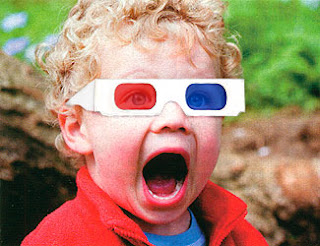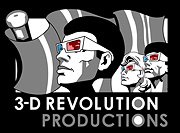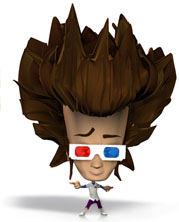Siggraph 2007 Next-Gen Displays

Neit 360 degree 3-D display
Two bits from a VFX Newswire article:
VFX Newswire article at
http://www.vfxworld.com/index.php?atype=articles&id=3369
SIGGRAPH 2007 Emerging Technologies: Next-Gen Displays
J. Paul Peszko speaks with John Sibert, SIGGRAPH 2007 co-chair of Emerging Technologies, about this year's focus on display technology.
(...)
One category of displays centers on digital projection. "DLP-3D TV is new technology that T. I. (Texas Instruments) has developed that will enable you to do on a home television HD display 3-D stereo that you would normally see at a place like Disney or possibly in theaters," explains Sibert.
(...)
Another interesting display technology is the Interactive 360-Degree Light Field Display being developed by the USC Institute for Creative Technologies. "The thing about 3-D displays is that they don't show very well on a web page," states Sibert. "The cool thing about this display is that you don't have to wear glasses, and it's based on kind of an old idea of a rotating mirror that reflects the image, which appears to be three-dimensional. Usually 3-D images are hard to move around or change the shape of in realtime. This one works fast enough that it can actually do that. Also, people can stand around it in a group and see the full 3-D."
Holographic Display as illustrated in VFX Newswire
Our comments on the article:
It’s very exciting to see 3-D display technology taking leaps and bounds, headed for our homes very soon. So it’s time to create 3-D content for all these wonderful screens. Unless you’re happy to watch cooking programmes and quiz shows in 3-D all day, that is…
3-D recording and filming is still a specialization because its parameters can be very tricky. So you will want expert stereo 3D help. 3-Dimensional imagery is shot using two cameras and the look of the resulting 3-D effect is as mouldable and creatively controllable as the regular film and video image. The 3-D equivalents of focal length, aperture size, lens size, depth of field, and use of colour are seriously underemployed! An amazing amount of different things can be done with stereoscopic 3-D, while currently not much of all that potential is tapped into by 3-D filmmakers.
3-D stereoscopic content creation is something we can help you with, from script to screen. Your creative 3-D ideas on tomorrow’s screens, in the best possible way!
Of course, one has to make a clear distinction between stereo 3-D and holographic 3-D imagery. They are different mediums. Why? Because holographic 3-D (including the 360-Degree Light Field Display imagery) has no framing, as opposed to stereo 3-D.
3-D is filmed with two cameras, while holographics are recorded with light hitting an object from a very wide array of angles. A real or virtual actor on these displays will be looking in one direction, while you, the viewer, may be looking at his side, his front or even his back. So there is no controllable eye-line and your fellow-viewer will always see a different image from you. In this way, cinematography cannot be employed for these displays; rather these moving images have to be approaches as you would theatre or a stage show. This is a very important distinction to make, and once you recognise this, you can create the best possible entertainment for these displays rather than doing something that equals a ‘radio show on TV’.
Time to get creative in 3-Dimensions!
![]()
![]()
![]()
![]()
![]()
![]()
![]()
![]()
![]()
![]()
![]()
![]()




